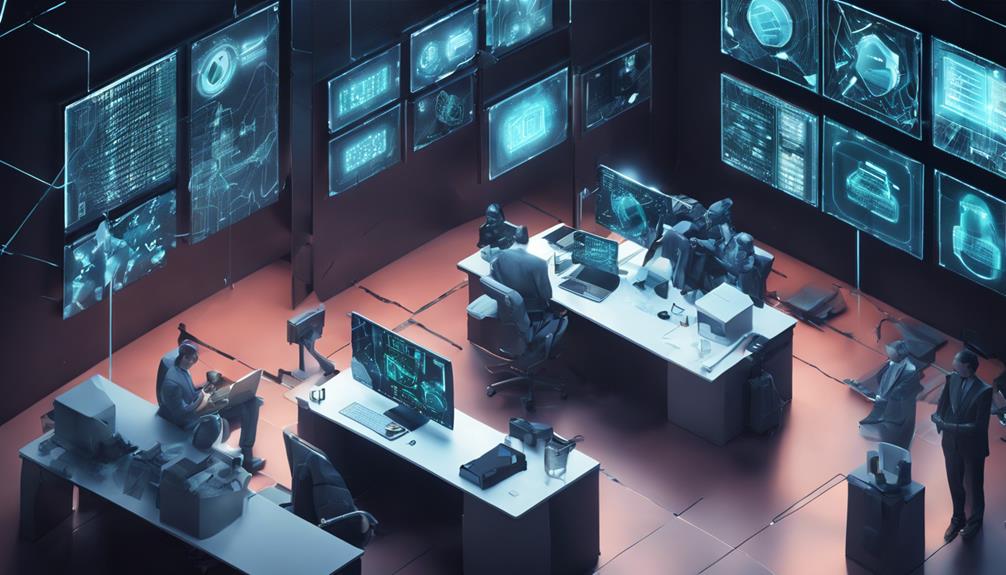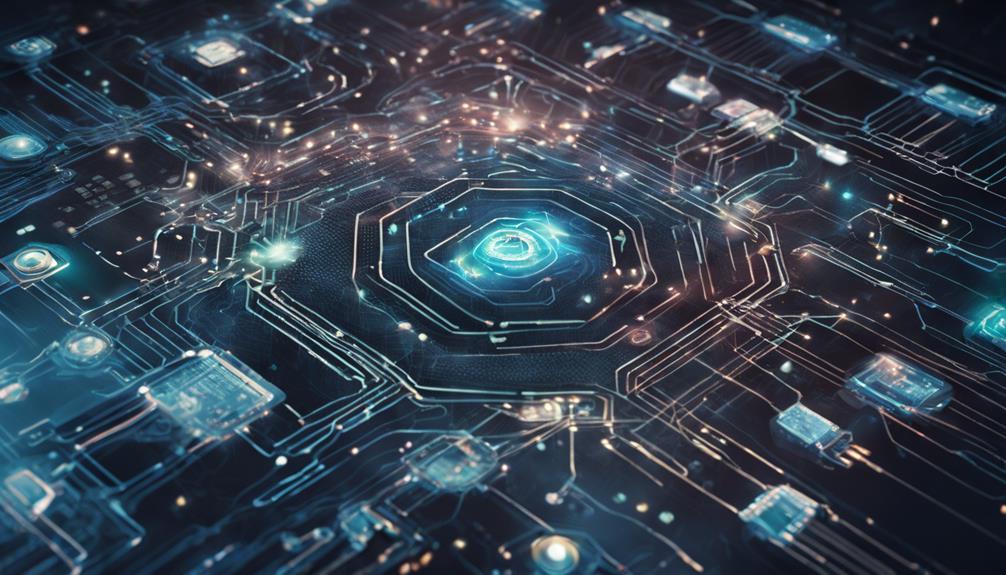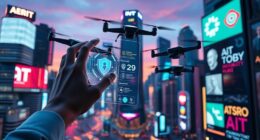The fusion of AI and cybersecurity offers a burgeoning domain of opportunities in a field witnessing tremendous growth and innovation. With AI bolstering threat detection, security operations, and incident response, professionals find themselves at the forefront of a dynamic landscape. Challenges like skill gaps and ethical concerns exist, but collaborative efforts and continuous learning foster a robust environment. Venturing into this sphere promises a rewarding career trajectory amid the evolving cybersecurity sector. Joining this field can lead to impactful roles and advancements in a domain essential for safeguarding digital spaces. Learn more about the prospects that await in this dynamic sector.
Key Takeaways
- AI integration in cybersecurity enhances threat detection and job efficiency.
- Collaborative efforts are essential for securing AI/ML technologies effectively.
- AI regulations and formal policies on AI ethics are crucial for safe integration.
- Continuous education and training enhance expertise in AI security.
- Professional development through workshops and certifications boosts career opportunities in AI cybersecurity.
AI Integration in Cybersecurity
With the rapid advancements in technology, the integration of AI in cybersecurity has revolutionized the landscape of threat detection and security operations. AI integration has empowered security teams to perform cybersecurity tasks with increased efficiency and accuracy.
By seamlessly integrating AI with EDR platforms, SIEM platforms, and malware analysis tools, security operations have been enhanced greatly. AI tools are now vital in incident response, compliance monitoring, and threat intelligence, playing an essential role in securing digital environments.
The utilization of AI in cybersecurity not only boosts the effectiveness of security detections but also allows professionals to focus on more strategic tasks while AI handles routine processes. This integration has streamlined operations, enabled proactive threat detection, and improved overall cybersecurity posture.
Challenges and Opportunities
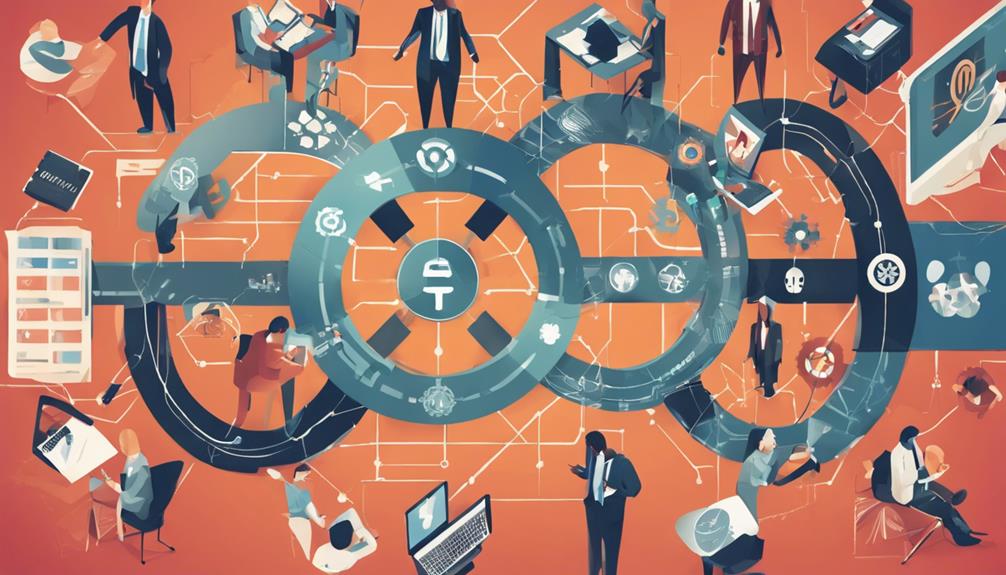
The integration of AI in cybersecurity presents both significant challenges and promising opportunities for professionals in the field. While 82% of cybersecurity experts foresee AI enhancing job efficiency, 56% are concerned about potential job aspects becoming obsolete.
The rise of deepfakes, misinformation, and social engineering pose serious challenges, with 75% of professionals worried about AI misuse in cyberattacks.
Despite these challenges, there are opportunities for skilled cybersecurity professionals to lead the way in guiding secure AI adoption. Currently, 60% feel confident in this role, yet 41% lack the expertise needed to secure AI/ML technology effectively. Moreover, the absence of formal AI ethics policies among 27% of professionals underscores the necessity for specific AI regulations in the cybersecurity domain.
To address these challenges and capitalize on opportunities, collaborative efforts among professionals and governments are essential. Sixty-three percent of cybersecurity experts advocate for collaborative government regulations to navigate the evolving landscape of AI in cybersecurity effectively.
Regulations for AI Technologies

Regulatory frameworks for AI technologies in the cybersecurity industry are considered vital by 82% of cybersecurity professionals. Establishing regulations guarantees the ethical use of AI and machine learning technologies, safeguarding against potential misuse.
Currently, only 27% of organizations have formal policies addressing the ethical implications of AI, highlighting the pressing need for industry-wide standards. Additionally, 41% of professionals lack the expertise needed to secure AI and ML technologies adequately, emphasizing the importance of ongoing education and training initiatives.
Responsible implementation of AI is essential, with 60% of cybersecurity professionals expressing confidence in guiding secure AI adoption. Collaboration between industry stakeholders and government bodies is favored by 63% of professionals to address the challenges posed by AI technologies effectively.
The industry stands at a pivotal moment where regulations, education, and responsible practices will shape the future of cybersecurity AI integration.
Expertise in Securing AI/ML Tech

Securing AI and ML technologies is critical in today's cybersecurity landscape. Understanding the importance of AI security, recognizing the evolving threat landscape of machine learning, and implementing secure AI practices are key aspects to focus on.
AI Security Importance
Professionals in the cybersecurity field are increasingly recognizing the critical need for expertise in securing AI and machine learning technologies. With the rapid integration of AI tools in cybersecurity, ensuring the security of AI systems has become paramount.
Studies show that 41% of cybersecurity professionals lack the necessary skills to secure AI/ML technologies effectively. Additionally, 82% of professionals advocate for specific regulations governing AI in cybersecurity to address potential risks adequately. Despite this, only 27% of organizations have formal policies concerning AI ethics, highlighting the urgency for detailed guidelines.
To navigate the complexities of AI security, professionals must prioritize understanding AI's role in cybersecurity and promoting secure AI adoption within their organizations. While 60% of professionals feel confident in guiding this adoption, continuous education and training are essential.
Organizations like ISC2 offer workshops aimed at educating professionals on the safe implementation of AI in cybersecurity. By enhancing their expertise in AI security, cybersecurity professionals can play a significant role in safeguarding systems against emerging threats.
ML Threat Landscape
Understanding the evolving threat landscape of machine learning (ML) technologies is imperative for cybersecurity professionals aiming to secure AI systems effectively. As per recent data, 41% of cybersecurity professionals lack expertise in securing AI/ML technologies, highlighting a crucial gap in the industry. Additionally, only 27% of organizations have formal policies in place for AI ethics, signifying a need for greater awareness and implementation of ethical considerations in AI development. Furthermore, 82% of professionals advocate for specific AI regulations to govern its use in cybersecurity, underscoring the importance of establishing guidelines to ensure responsible AI practices. Organizations like ISC2 offer AI workshops to facilitate collaboration among cybersecurity professionals, enhancing their ability to navigate the complexities of securing AI technologies. Despite challenges, 60% of professionals express confidence in guiding the secure adoption of AI in the cybersecurity industry, emphasizing the potential for growth and innovation while prioritizing security measures.
| Keyword | Statistics/Information |
|---|---|
| AI | 41% of cybersecurity professionals lack expertise in securing AI/ML technologies. |
| ML | Only 27% of organizations have formal policies in place for AI ethics. |
| Cybersecurity | 82% of professionals see the need for specific AI regulations to govern its use in cybersecurity. |
| AI ethics | ISC2 provides AI workshops to facilitate collaboration among professionals in securing AI technologies. |
| AI regulations | 60% of professionals feel confident in guiding the secure adoption of AI in the cybersecurity industry. |
| ISC2 | |
| AI workshops | |
| Secure adoption |
Secure AI Implementation
Efficient and effective implementation of secure AI technologies requires a deep understanding of the complexities involved in safeguarding AI and machine learning systems.
The industry faces a significant gap in expertise, with 41% of professionals lacking the necessary skills to secure AI/ML tech adequately. Additionally, the absence of formal policies on AI ethics in 73% of organizations underscores the need for structured guidelines in this rapidly evolving field.
Recognizing the urgency, 82% of professionals advocate for specific AI regulations to govern its secure implementation. Organizations like ISC2 are stepping up by offering AI workshops to promote collaboration among professionals, emphasizing the importance of shared knowledge in securing AI technologies.
Global collaboration is key to establishing thorough regulations that promote the safe and ethical use of AI in cybersecurity. By fostering expertise, developing robust policies, and encouraging collaboration, professionals can work together to navigate the complexities of secure AI implementation effectively.
Collaborative Efforts in Cybersecurity

Effective collaboration among stakeholders is paramount in enhancing cybersecurity measures against evolving AI threats. As the cybersecurity landscape evolves rapidly, it is crucial for professionals to work together to address the challenges posed by AI implementation. Organizations must prioritize developing specific AI regulations to guide the cybersecurity industry and ensure ethically sound practices. ISC2's AI workshops play a vital role in fostering expertise and collaboration among cybersecurity professionals.
| Collaborative Efforts in Cybersecurity | ||
|---|---|---|
| Benefits of Collaboration | Enhances cybersecurity measures | Fosters expertise |
| Challenges | Lack of formal AI ethics policies | Need for specific AI regulations |
| Solutions | Participate in AI workshops | Advocate for collaborative efforts |
Safe and Ethical AI Integration
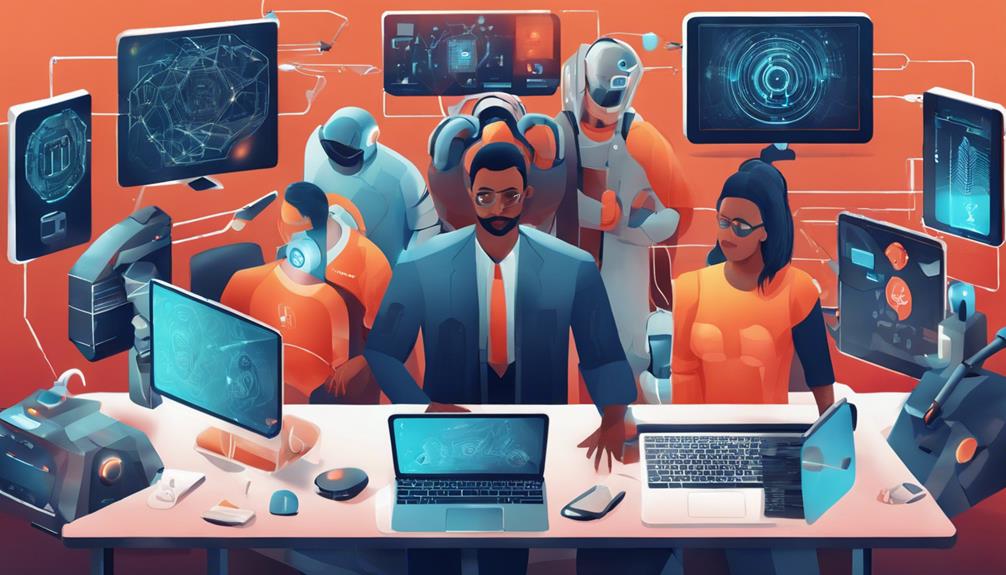
Given the rapid evolution of artificial intelligence (AI) technologies, ensuring the safe and ethical integration of AI is paramount in safeguarding against potential misuse in cyberattacks. While AI holds the promise of enhancing job efficiency in cybersecurity, concerns regarding its misuse loom large. Presently, only a minority of organizations have formal policies on AI ethics, underscoring the urgent need for specific regulations in this domain.
To address these challenges effectively, professionals advocate for global collaboration on AI governance, aiming to tackle issues such as deepfakes, misinformation, and social engineering. Initiatives like AI workshops provided by organizations such as ISC2 play an important role in equipping professionals with the necessary expertise to secure AI and machine learning (ML) technologies in the cybersecurity field.
Navigating the Evolving Landscape

In the dynamic world of cybersecurity, professionals are increasingly entrusted with maneuvering through the evolving landscape shaped by the integration of artificial intelligence technologies.
As AI specialists become integral to the workforce, they bring forth new oversight roles that monitor the impact of AI on the cybersecurity industry.
Additionally, the disruptive force of generative AI is reshaping job growth patterns and challenging traditional cybersecurity practices.
Organizations embracing AI are not only expected to tackle cybersecurity challenges more effectively but also contribute to the potential 7% boost in global GDP estimated by Goldman Sachs.
The evolving landscape of cybersecurity demands a proactive approach to staying ahead of threats and leveraging AI technologies to fortify defenses.
Embracing these changes opens up avenues for professionals to thrive in a field that is rapidly evolving, offering diverse opportunities for growth and innovation.
Ensuring AI Security
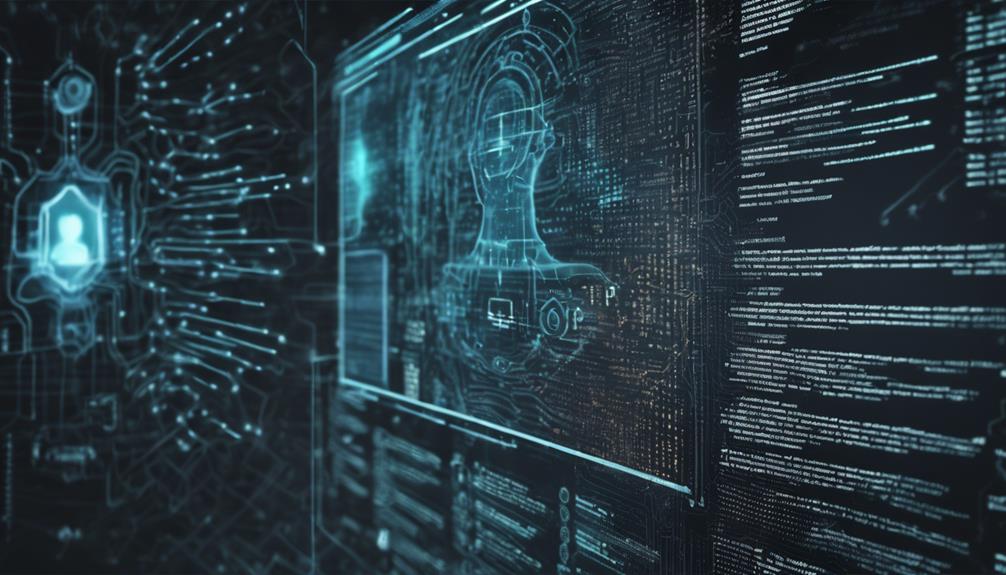
Ensuring the security of AI technologies has become a paramount concern for cybersecurity professionals, given the increasing risks associated with AI misuse in cyberattacks. As 75% of cybersecurity professionals are worried about AI misuse, the need for robust AI governance in cybersecurity is evident.
A significant gap exists, with 41% of professionals lacking expertise in securing AI/ML tech. Establishing formal policies on AI ethics is vital, as only 27% of organizations currently have them in place.
The call for specific AI regulations is loud and clear, with 82% of professionals advocating for them to guarantee secure AI adoption in cybersecurity. Despite the challenges, 60% of professionals feel equipped to guide secure AI adoption, showcasing readiness to tackle AI security challenges.
Emphasizing AI security, implementing AI governance frameworks, enhancing AI ethics guidelines, and advocating for AI regulations are essential steps towards a safer AI landscape in cybersecurity.
Professional Development in AI Cybersecurity

In the field of AI cybersecurity, professionals must prioritize continuous skill enhancement through targeted training to adapt to the dynamic technological landscape. This commitment not only opens doors to career advancement opportunities but also equips individuals with the expertise needed to navigate the evolving cybersecurity challenges effectively.
Skill Enhancement Through Training
How can professionals in AI cybersecurity effectively enhance their skills and knowledge through targeted training programs?
AI cybersecurity training plays a pivotal role in preparing individuals to combat evolving cyber threats. By engaging in such programs, professionals gain hands-on experience and practical insights into AI integration within cybersecurity roles. Continuous learning is key to staying ahead in the field, as these training sessions provide opportunities for skill enhancement essential for maneuvering the complexities of modern cybersecurity landscapes.
- Immersive Learning Environments:
Training programs should offer immersive experiences that simulate real-world cybersecurity scenarios, allowing professionals to apply theoretical knowledge to practical situations effectively.
- Expert-Led Workshops:
Engaging with industry experts in workshops can provide valuable insights and guidance on the latest trends and technologies in AI cybersecurity, helping professionals stay current and competitive.
- Certification Pathways:
Pursuing certifications like CISSP, CEH, and CISM can not only validate one's expertise but also open doors to advanced cybersecurity positions, showcasing a commitment to continuous improvement in the field.
Career Advancement Opportunities
Professionals seeking to excel in AI cybersecurity can capitalize on career advancement opportunities through continuous professional development and specialized training in cutting-edge technologies. By obtaining certifications such as CompTIA CySA+ and CISSP, individuals can enhance their skill sets and open doors to a plethora of career growth possibilities within the cybersecurity domain.
AI integration in cybersecurity presents avenues for specialization in areas like threat intelligence and incident response, providing professionals with the chance to take on more complex job responsibilities. Continuous training in AI tools and techniques is essential for staying relevant in the rapidly evolving cybersecurity landscape, offering avenues for career progression and increased responsibilities.
Collaborating with AI solutions not only enhances one's expertise in handling sophisticated cyber threats but also paves the way for career advancement in this dynamic field. Embracing these opportunities for professional development can lead to a fulfilling and prosperous career journey in AI cybersecurity.
Frequently Asked Questions
Is Cybersecurity a Growing Job Field?
Cybersecurity is undeniably a burgeoning job field, evidenced by the projected growth of over 1 million jobs by 2023 and an estimated industry growth rate of 11% in 2023, highlighting the high demand for cybersecurity professionals in combating cyber threats.
Is AI and Cyber Security a Good Career?
AI and cybersecurity offer a promising career path due to the increasing importance of AI integration in the industry. Professionals with AI skills are in high demand to enhance job efficiency, automate decisions, and create new oversight roles, signaling growth opportunities.
What Is the Future of AI in Cybersecurity?
The future of AI in cybersecurity is promising as it continues to revolutionize threat detection and mitigation. Advancements in machine learning algorithms, behavioral biometrics, and human-AI collaboration are reshaping defenses, creating exciting opportunities for cyber professionals.
Will AI Replace Cyber Security Jobs?
While AI advancements in cybersecurity may automate certain tasks, the need for skilled professionals remains essential. AI can enhance job efficiency, but human expertise is indispensable in combating evolving cyber threats and ensuring ethical AI use.
Conclusion
To sum up, the integration of AI in cybersecurity presents both challenges and opportunities for professionals in the field. By staying informed on regulations, developing expertise in securing AI technologies, and collaborating with others in the industry, individuals can navigate this evolving landscape successfully.
Professional development in AI cybersecurity is crucial to guarantee safe and ethical integration of these technologies. By prioritizing AI security and fostering a culture of collaboration, professionals can contribute to a safer online environment for all.
